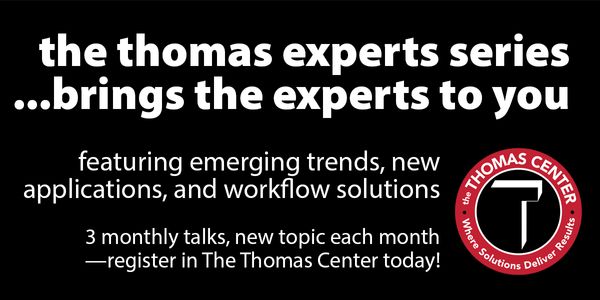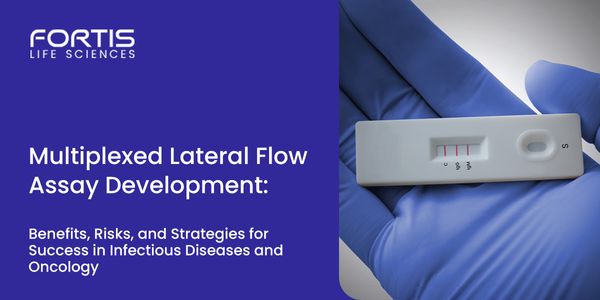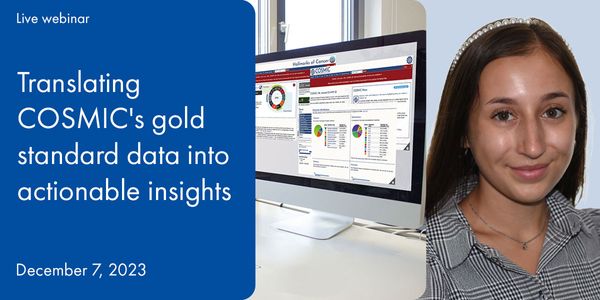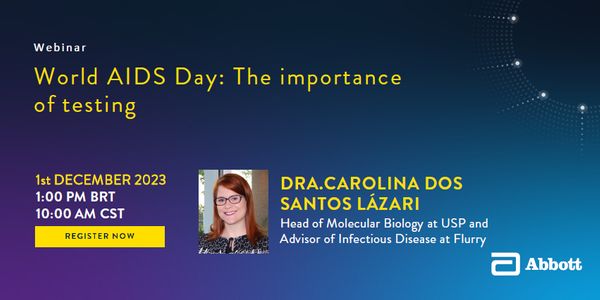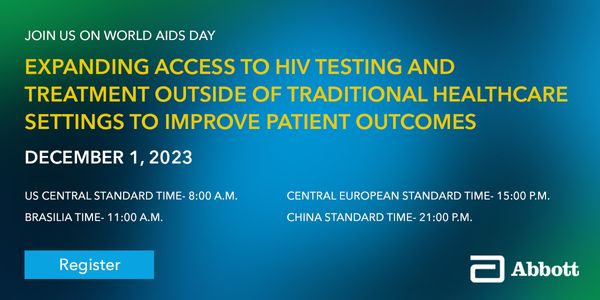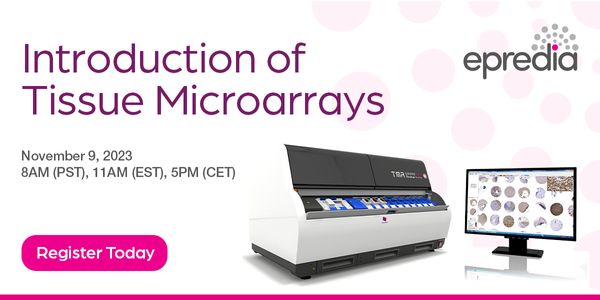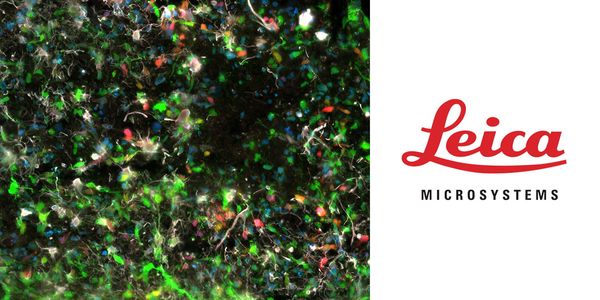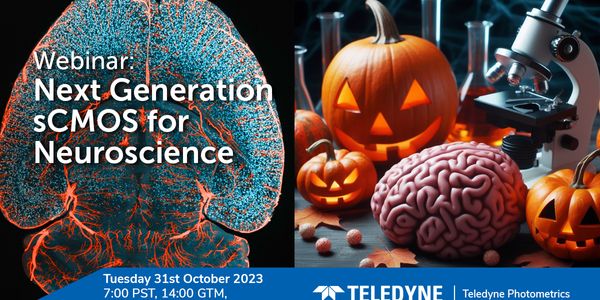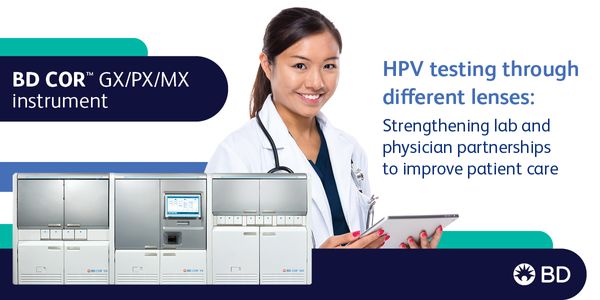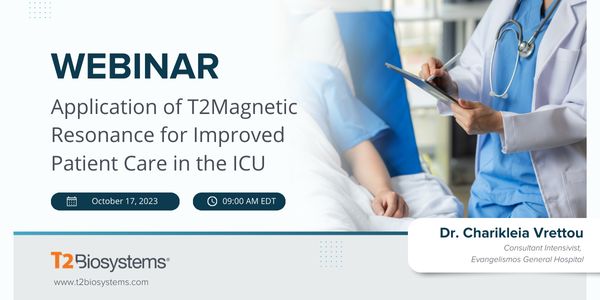Education
Education: the process of learning, or the acquiring of knowledge, skills, values, beliefs, and habits. Methods include storytelling, discussion, teaching, training, and directed research.
-
DECEMBER 14, 2023 2:00 PM ETIncrease your knowledge of the attributes to look for when choosing laboratory supplies (and stretch your budget in the process)....Speaker: Jim Duffey , John GuraDEC 13, 2023 | 9:00 AMThe quest for digital excellence in today’s biotech research laboratories demands modern software acquisition, robust protection protocols, and a keen eye on evolving security requirem...DEC 07, 2023 | 10:00 AMC.E. CREDITSLateral flow assay applications have become increasingly diverse in a post-pandemic world, and the areas of infectious disease and oncology continue to be at the forefront. In both areas, th...DEC 07, 2023 | 8:00 AMAs the vast landscape of genetic oncology continues to expand, the ability to understand and utilize the full potential of this rich data becomes increasingly challenging. As a result, resea...DEC 01, 2023 | 8:00 AMAccording to the most recent data from UNAIDS, in 2022, there were around 39 million people living with HIV worldwide. Of these, 5.5 million people were unaware of their diagnosis in 2021. M...DEC 01, 2023 | 6:00 AMC.E. CREDITSIn recognition of World AIDS Day, we invite you to discover the innovative work being done to help end the HIV epidemic in some of the hardest hit areas in India. A diagnosis is the first st...Pathology Perspective: Discover the critical need for genomic testing in cancer and explore the differences between traditional tissue biopsies and liquid genomic profiling. We'll dive i...Speaker: Dr. Shuko Harada , Dr. Aakash Desai, MBBS, MPHPresented at: Precision Medicine in Solid Tumors
NOV 29, 2023 | 8:00 AM
Light-sheet microscopy is a rapidly developing field thanks to the numerous benefits and vast number of implementations when imaging with a light sheet. However, these benefits are best real...
NOV 16, 2023 | 9:00 AM
The digital transformation of the field of biotech R&D is accelerating, driven by the integration of artificial intelligence (AI) and machine learning (ML). These technologies are reshap...
NOV 16, 2023 | 8:00 AM
Myelodysplastic Syndrome (MDS) requires a complicated workup that can be supported by Artificial Intelligence (AI). Initial findings using AI have shown that MDS can be preliminarily identif...
NOV 15, 2023 1:00 PM ET
C.E. CREDITS
Learn how quality control in coagulation testing ensures accurate results, detects errors, and improves lab performance for better patient care...
Speaker:
LaShanta Brice, DCLS, MLS(ASCP)ᶜᵐSHᶜᵐ
NOV 15, 2023 | 9:00 AM
Multicolor flow cytometry is beneficial because it allows us to gain deeper insights from a given biological sample, with fewer repeat markers in each tube and quicker results. In this three...
NOV 15, 2023 | 7:00 AM
Join Assoc. Prof. Dr. Alfonso Blanco, the Director of the Flow Cytometry Core Technologies in the University College Dublin for a review of what he looks for in new cytometry analyzers and s...
Spheroids and organoids, two examples of 3D cell culture models, have become invaluable tools to study the processes that dictate behavior of tissues under physiological and pathological con...
NOV 09, 2023 | 8:00 AM
C.E. CREDITS
Tissue microarray combines tens to hundreds paraffin-embedded specimens into a single paraffin block. It is a practical and highly effective tool for high-throughput analyses including valid...
Gynecologic cancers account for nearly 40% of all cancer incidence and >30% of all cancer mortality in women worldwide. In recent years, there have been significant advancements in the cl...
OCT 31, 2023 | 9:00 AM
Gene therapy holds potential for treating neurological diseases by delivering genetic information into specific cell types. However, selective and efficient targeting of cell types remains c...
OCT 31, 2023 | 7:00 AM
Neuroscience focuses on the study of the nervous system: a highly complex, dense, and organized network stretching across the whole body of most organisms. Due to this neuroscience can be a...
OCT 18, 2023 | 9:00 AM
In this webinar, Jenny Meredith, Ph.D., HCLD(ABB), Clinical Microbiology Director at Prisma Health-Upstate joins forces with Sara Ezra, Molecular Supervisor at Pathology Consultants (subsidi...
OCT 17, 2023 | 6:00 AM
During this presentation, the speaker will provide insights into the clinical utility of the T2Bacteria and T2Resistance Panels in the intensive care unit (ICU), including real-world clinica...
OCT 10, 2023 | 10:00 AM
For patients with advanced non-small cell lung cancer (NSCLC), tissue samples are typically small biopsies. These samples undergo standard of care evaluation for >10 biomarkers to identif...
OCT 10, 2023 | 9:00 AM
Numerous studies have shown that homologous recombination deficiency (HRD) is a genome-wide biomarker present in high grade ovarian and breast cancers. A cancer therapeutic class, PARP inhib...
OCT 10, 2023 | 1:00 AM
Numerous studies have shown that homologous recombination deficiency (HRD) is a genome-wide biomarker present in high grade ovarian and breast cancers. A cancer therapeutic class, PARP inhib...
OCT 05, 2023 | 1:00 AM
Organoids continue to gain traction in drug discovery efforts as they offer a more biologically relevant disease model than traditional approaches. But they aren't without challenges. Jo...
DECEMBER 14, 2023 2:00 PM ET
Increase your knowledge of the attributes to look for when choosing laboratory supplies (and stretch your budget in the process)....
Speaker:
Jim Duffey
, John Gura
DEC 13, 2023 | 9:00 AM
The quest for digital excellence in today’s biotech research laboratories demands modern software acquisition, robust protection protocols, and a keen eye on evolving security requirem...
DEC 07, 2023 | 10:00 AM
C.E. CREDITS
Lateral flow assay applications have become increasingly diverse in a post-pandemic world, and the areas of infectious disease and oncology continue to be at the forefront. In both areas, th...
DEC 07, 2023 | 8:00 AM
As the vast landscape of genetic oncology continues to expand, the ability to understand and utilize the full potential of this rich data becomes increasingly challenging. As a result, resea...
DEC 01, 2023 | 8:00 AM
According to the most recent data from UNAIDS, in 2022, there were around 39 million people living with HIV worldwide. Of these, 5.5 million people were unaware of their diagnosis in 2021. M...
DEC 01, 2023 | 6:00 AM
C.E. CREDITS
In recognition of World AIDS Day, we invite you to discover the innovative work being done to help end the HIV epidemic in some of the hardest hit areas in India. A diagnosis is the first st...
Pathology Perspective: Discover the critical need for genomic testing in cancer and explore the differences between traditional tissue biopsies and liquid genomic profiling. We'll dive i...
Speaker:
Dr. Shuko Harada
, Dr. Aakash Desai, MBBS, MPH
Presented at: Precision Medicine in Solid Tumors
NOV 29, 2023 | 8:00 AM
Light-sheet microscopy is a rapidly developing field thanks to the numerous benefits and vast number of implementations when imaging with a light sheet. However, these benefits are best real...
NOV 16, 2023 | 9:00 AM
The digital transformation of the field of biotech R&D is accelerating, driven by the integration of artificial intelligence (AI) and machine learning (ML). These technologies are reshap...
NOV 16, 2023 | 8:00 AM
Myelodysplastic Syndrome (MDS) requires a complicated workup that can be supported by Artificial Intelligence (AI). Initial findings using AI have shown that MDS can be preliminarily identif...
NOV 15, 2023 1:00 PM ET
C.E. CREDITS
Learn how quality control in coagulation testing ensures accurate results, detects errors, and improves lab performance for better patient care...
Speaker:
LaShanta Brice, DCLS, MLS(ASCP)ᶜᵐSHᶜᵐ
NOV 15, 2023 | 9:00 AM
Multicolor flow cytometry is beneficial because it allows us to gain deeper insights from a given biological sample, with fewer repeat markers in each tube and quicker results. In this three...
NOV 15, 2023 | 7:00 AM
Join Assoc. Prof. Dr. Alfonso Blanco, the Director of the Flow Cytometry Core Technologies in the University College Dublin for a review of what he looks for in new cytometry analyzers and s...
Spheroids and organoids, two examples of 3D cell culture models, have become invaluable tools to study the processes that dictate behavior of tissues under physiological and pathological con...
NOV 09, 2023 | 8:00 AM
C.E. CREDITS
Tissue microarray combines tens to hundreds paraffin-embedded specimens into a single paraffin block. It is a practical and highly effective tool for high-throughput analyses including valid...
Gynecologic cancers account for nearly 40% of all cancer incidence and >30% of all cancer mortality in women worldwide. In recent years, there have been significant advancements in the cl...
OCT 31, 2023 | 9:00 AM
Gene therapy holds potential for treating neurological diseases by delivering genetic information into specific cell types. However, selective and efficient targeting of cell types remains c...
OCT 31, 2023 | 7:00 AM
Neuroscience focuses on the study of the nervous system: a highly complex, dense, and organized network stretching across the whole body of most organisms. Due to this neuroscience can be a...
OCT 18, 2023 | 9:00 AM
In this webinar, Jenny Meredith, Ph.D., HCLD(ABB), Clinical Microbiology Director at Prisma Health-Upstate joins forces with Sara Ezra, Molecular Supervisor at Pathology Consultants (subsidi...
OCT 17, 2023 | 6:00 AM
During this presentation, the speaker will provide insights into the clinical utility of the T2Bacteria and T2Resistance Panels in the intensive care unit (ICU), including real-world clinica...
OCT 10, 2023 | 10:00 AM
For patients with advanced non-small cell lung cancer (NSCLC), tissue samples are typically small biopsies. These samples undergo standard of care evaluation for >10 biomarkers to identif...
OCT 10, 2023 | 9:00 AM
Numerous studies have shown that homologous recombination deficiency (HRD) is a genome-wide biomarker present in high grade ovarian and breast cancers. A cancer therapeutic class, PARP inhib...
OCT 10, 2023 | 1:00 AM
Numerous studies have shown that homologous recombination deficiency (HRD) is a genome-wide biomarker present in high grade ovarian and breast cancers. A cancer therapeutic class, PARP inhib...
OCT 05, 2023 | 1:00 AM
Organoids continue to gain traction in drug discovery efforts as they offer a more biologically relevant disease model than traditional approaches. But they aren't without challenges. Jo...

